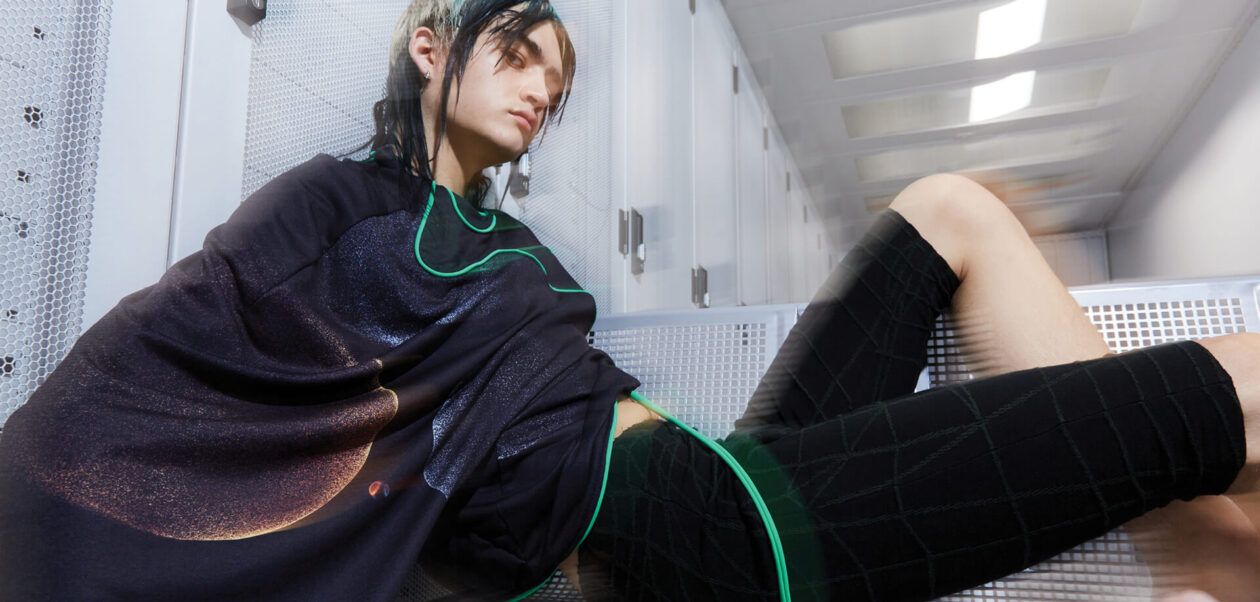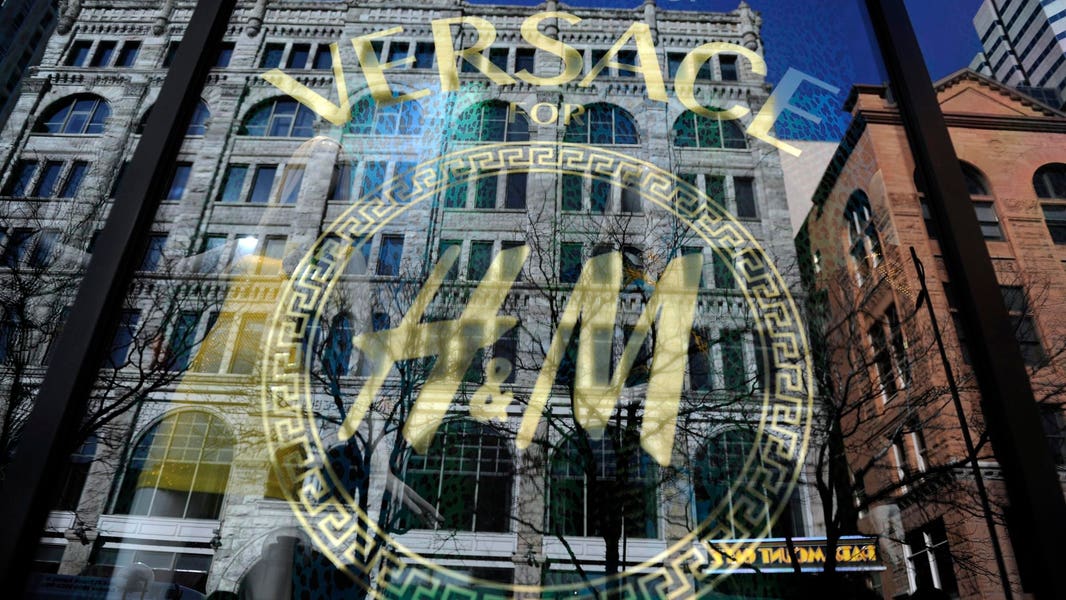The exhibition ROUTER (September 29 – October 29, 2023) at multiple venues in Antwerp, Belgium, treats audiences to a highly original offering of garments created at the intersection of fashion and technology. It is presented by the Austrian fashion designer Flora Miranda, along with a creative venture she has founded called IT Pieces, which she introduces to STIR as a “generative design approach for fashion and textiles”. The term “generative design” references design practices that utilise computer coding, and while code has seen application in several creative industries, its inclusion has thus far been largely omitted in fashion design. The venture, or “format” as she also refers to it, harnesses data collected by organisations focused on research, IT and finance, in order to create clothes. Miranda and IT Pieces have collaborated with six companies across sectors for ROUTER. These include Advantage Austria, which promotes trade for the Federal Austrian Chamber; the Belgian bank insurer KBC; Cegeka, a European IT services provider; Cresco, a business law firm; Myrrha, which researches nuclear technology; and S(n)-Trackers, a financial initiative aimed at offering private banking services.

Miranda discusses IT Pieces’ methodology, telling STIR: “We connect data inputs to digital visuals that react to this data. The digital visuals are created to be directly linked to production techniques such as embroidery, knitting and weaving, among others.” Audiences at ROUTER can view finished garments and samples of the various textiles that went into creating these pieces. Additionally, there are videos created through the same generative art that underline the project.

IT Pieces is a novel offering spanning new media art, fashion and corporate spaces and, in order to develop it, Miranda worked alongside a small team of four creative coders and digital artists to combine coding and fashion through engagement with design software such as Touchdesigner, Houdini, Blender, P5.js, Processing and SVG code among others. At this time, IT Pieces is not a company in itself, but the fashion designer mentions that this might indeed be the case in the future. For now, it is effectively a vehicle to introduce the corporate space to Miranda’s own world of fashion experimentation, in order to broaden craftsmanship and aesthetic sensibilities.
Simultaneously, the venture is trying to stimulate digital creativity and spark new perspectives on data, which it pursues through workshops and happenings led by Miranda in collaboration with company teams. She discusses her role in these sessions, telling STIR: “I am currently the one who comes up with the concepts and coordinates the creative realisation between programmers, designers, production companies and, of course, the client. That said, there are some projects that I realise entirely by myself, including coding.” These collaborations result in the creation of bespoke, customised garments that are highly original; more so within a corporate context. In Miranda’s words: “Instead of simply visualising data for scientific or economic insight, we explore it on an aesthetic and storytelling level.”

The fashion designer views coding as a craft and explains that it has opportunities and demands, just like any other. While most generative artists do not often intersect with the fashion world, Miranda and her team have added an entirely new dimension to generative design, by colliding it with garment-making. She tells STIR: “Generative design has been applied very well in architecture, product design, graphic design, art and maybe also jewellery design. But in fashion, for some reason, not at all.” Miranda’s own work is decidedly haute couture, and while most of IT Pieces’ forays into fashion design are equally avant-garde, some garments are much more appropriate for daily wear. The pieces are not a case of digital sensibilities tacked onto generic garments, with IT Pieces’ results posing a compelling case for what fashion in a cyberpunk world might look like.

The venture’s collaborations with companies have certainly been eye-opening for many across sectors, but while Miranda is happy with the work IT Pieces is currently undertaking, she is also keen to bring its unique take on coding home to the fashion industry. She tells STIR: “With IT Pieces we currently work with and for companies who are used to the word ‘data’ in the context of research, IT or finance. But we can create digital design systems for other fashion companies too. That would be a lot of fun. Creative coding is not common in today’s fashion houses and if it is combined with sustainable production, it forms a promising outlook to a more responsible fashion future.”

Miranda hopes that young and upcoming fashion designers in Antwerp will walk away from ROUTER having been stimulated by her vision of a digitally-driven fashion world that harnesses a spectrum of technologies. Coding may be a major driver for her own practice, but the possibilities that sit at the intersection of fashion and digital technology stretch far beyond that. In particular, one thinks of artificial intelligence (AI) technology, which Miranda says she has used: “The very first IT Pieces project, which we developed in 2016 and presented in 2017, involved AI. It was an online platform that one could log into with their social media account. The website was linked to a machine learning model, which we trained on the sentiments expressed in song lyrics. When logging into the website, the computer examines your public posts and matches your current sentiment with a lyric. After that, the chosen lyric was visualised on a shirt, and the knitting pattern was generated within the website. Finally, when you ordered the garment, the production took place automatically.”

Miranda’s experimentation with AI technology has been promising but her sense is that its potential value for the fashion industry transcends design tasks. She believes that it could very well drive positive systemic changes within the fashion world, such as waste reduction, for which the industry has been heavily criticised. Miranda says: “We must aim for that and upon thinking of AI, my mind immediately goes to potential improvements in the recycling and upcycling of textile waste; recognising different materials, sorting them, re-combining textile parts and so on.”

And how might AI affect visual sensibilities? Such a question evokes the distinct AI art aesthetic that is currently unavoidable on social media platforms. Upon asking Miranda if this might constitute a dominant aesthetic identity for fashion houses in the future, she is quick to make important distinctions. The fashion designer tells STIR: “Any technology or tool impacts aesthetics, values and overall workflow. I think AI is a technology that we currently see as one single field or technology. But the way I see it, it is a shell for more specific technologies. The people or companies who will create tools, workflows and products with AI will shape aesthetics (and not the AI itself). Just think about Google DeepDream, which became popular in 2015. The software was based on AI and produced images with a very specific aesthetic. Now we have visual tools like Midjourney or Dall-E, and each has a certain look.” Consistent with her articulation of coding in IT Pieces’ work, Miranda’s perspective on AI seems to place fashion designers, collaborators, and draftspeople as protagonists in the future she envisions, with AI serving as a valuable tool. “It is not AI itself but what we do with it that makes the difference,” she says.
ROUTER runs from September 29 – October 29, 2023 in Antwerp, Belgium, at Het Steen, City Hall, Sapphire House and Fiera.




